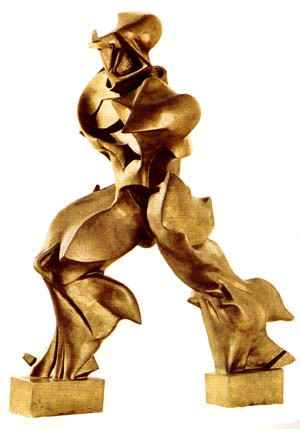Year 1913 Genre Kinetic art | Dimensions 1.11 m x 88 cm Media Bronze | |
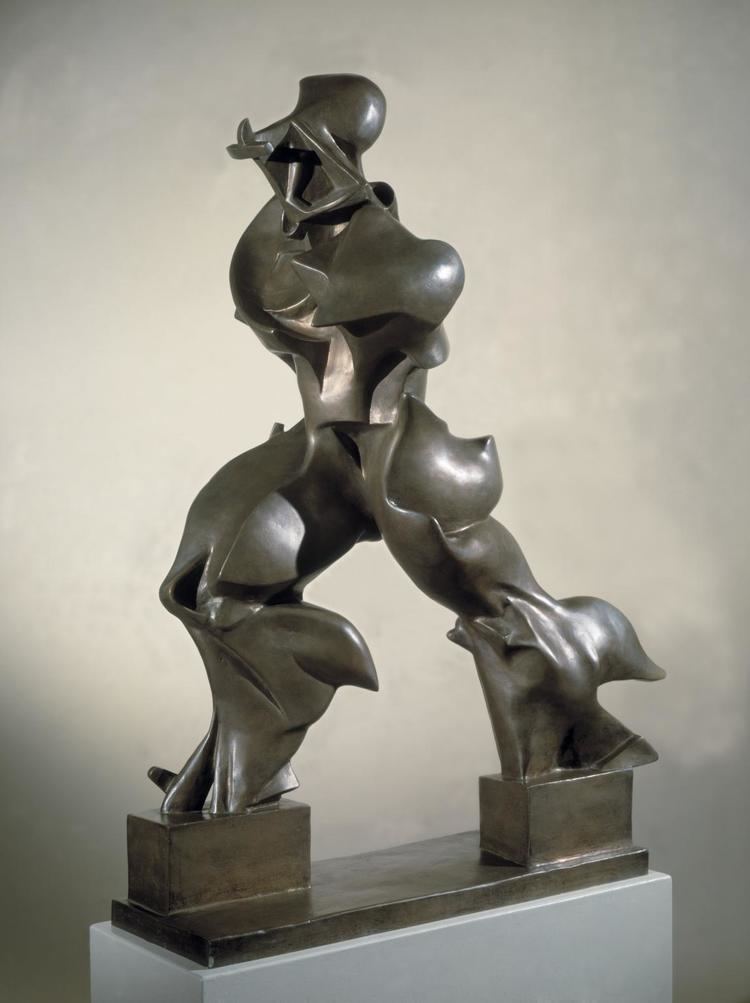 | ||
Similar Umberto Boccioni artwork, Artwork at Museum of Modern Art, Futurism artwork | ||
Umberto boccioni unique forms of continuity in space 1913
Unique Forms of Continuity in Space (Italian: Forme uniche della continuità nello spazio) is a bronze Futurist sculpture by Umberto Boccioni. It is seen as an expression of movement and fluidity. The sculpture is depicted on the obverse of the Italian-issue 20 cent euro coin.
Contents
- Umberto boccioni unique forms of continuity in space 1913
- Umberto boccioni unique forms of continuity in space
- History
- Composition
- Original plaster and casts
- Influence
- References
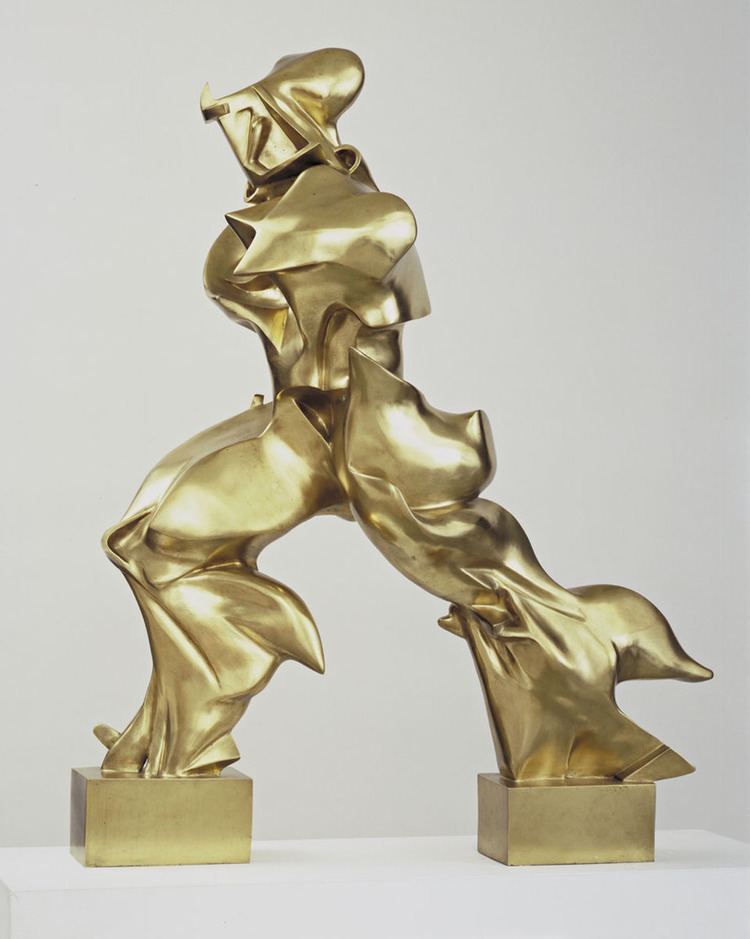
Umberto boccioni unique forms of continuity in space
History
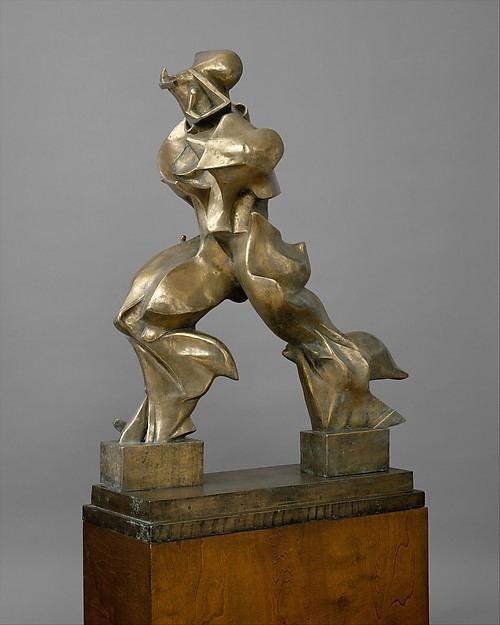
The Futurist movement was striving to portray speed and forceful dynamism in their art. Boccioni, though trained as a painter, began sculpting in 1912. He exclaimed that "these days I am obsessed by sculpture! I believe I have glimpsed a complete renovation of that mummified art." The following year Boccioni completed the sculpture. His goal for the work was to depict a "synthetic continuity" of motion instead of an "analytical discontinuity" that he saw in artists like František Kupka and Marcel Duchamp. In 1912–13 Boccioni created several other sculptures including his 1913 Development of a Bottle in Space.
Composition
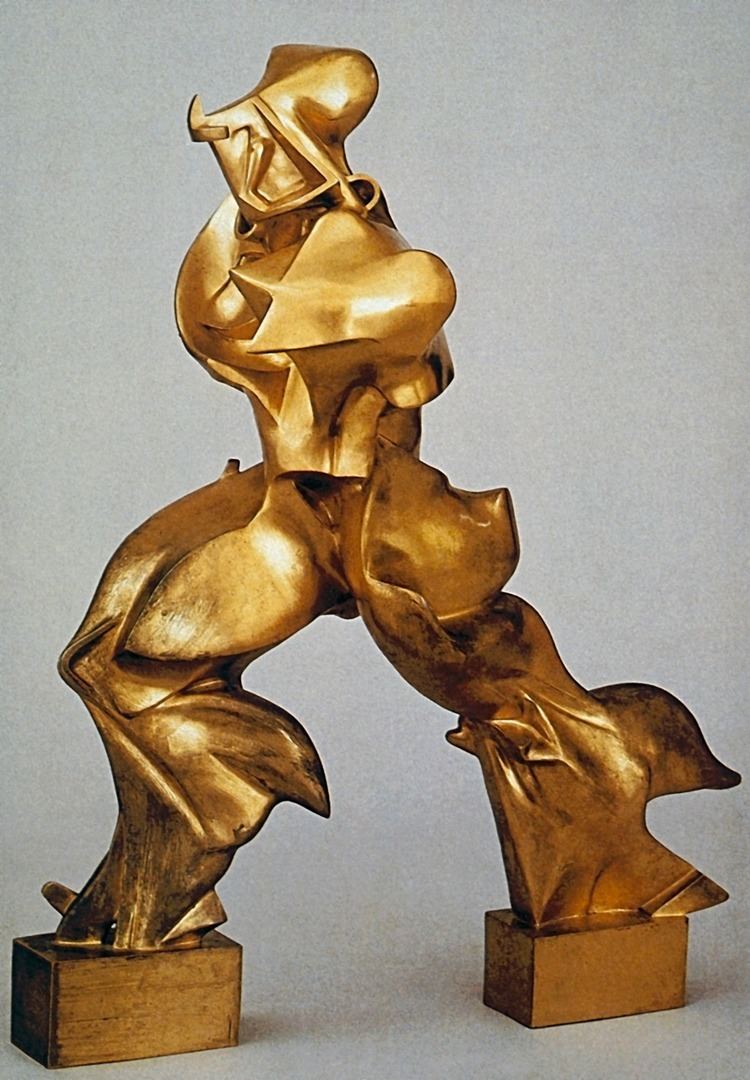
Unique Forms of Continuity in Space depicts a human-like figure apparently in motion. The sculpture has an aerodynamic and fluid form. As a pedestal, two blocks at the feet connect the figure to the ground. The figure is also armless and without a discernibly real face. The form was originally inspired by the sight of a football player moving on to a perfectly weighted pass.
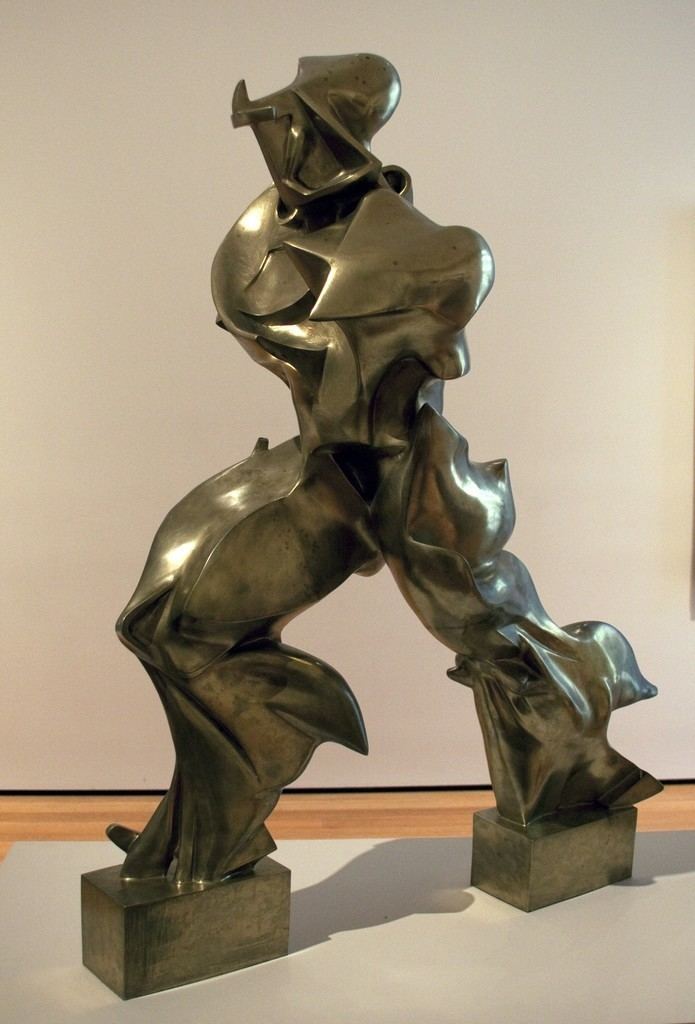
Though Boccioni apparently reviled traditional sculpture, Unique Forms of Continuity in Space does resemble more realist works. It is reminiscent of the classical Winged Victory of Samothrace, which Filippo Marinetti, founder of Futurism, declared was inferior in beauty to a roaring car. The lack of arms also pays homage to Auguste Rodin's Walking Man.
Original plaster and casts
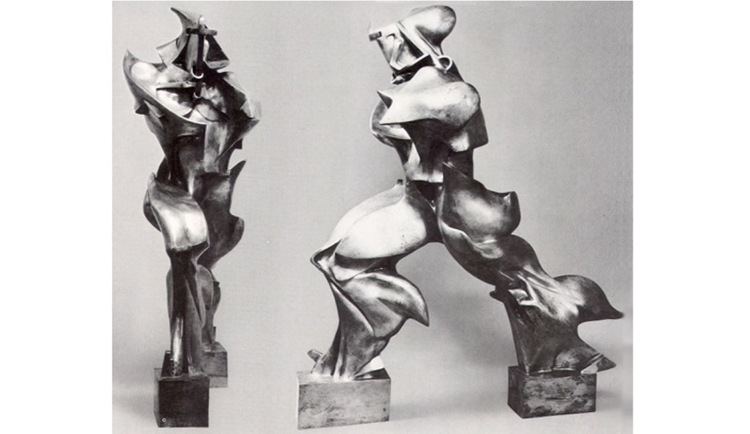
Boccioni's work was in plaster, and was never cast into bronze in his lifetime. His plaster cast is displayed at the Museu de Arte Contemporânea in São Paulo. Two casts were made in 1931, one of which is displayed at the Museum of Modern Art in Manhattan. Two were made in 1949, one of which is displayed at the Metropolitan Museum of Art in New York and other one at the Museum of Twentieth Century in Milan. Two more were made in 1972, one of which is displayed at the Tate Modern in London. Another eight, in 1972, were made not from the plaster, but from one of the 1949 bronzes. One bronze cast is in the Kröller-Müller Museum in Otterlo, Netherlands.
Influence
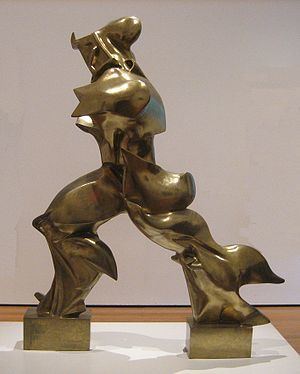
In 2009 Italian composer Carlo Forlivesi in collaboration with Stefano Fossati, Director of the Italian Cultural Institute in Melbourne, created an international composition competition and workshop titled Unique Forms of Continuity in Space (Forme Uniche della Continuità nello Spazio), commemorating the hundredth anniversary of Italian Futurism. With a name which brings to mind Boccioni's piece, the initiative, organised on an annual basis, celebrates the power of musical composition mingled with the strength of the Italian language. The international composition competition and workshop Unique Forms of Continuity in Space aims to contribute to the creation of a large and eclectic body of art works, with particular significance for the relationship between music and poetry.
